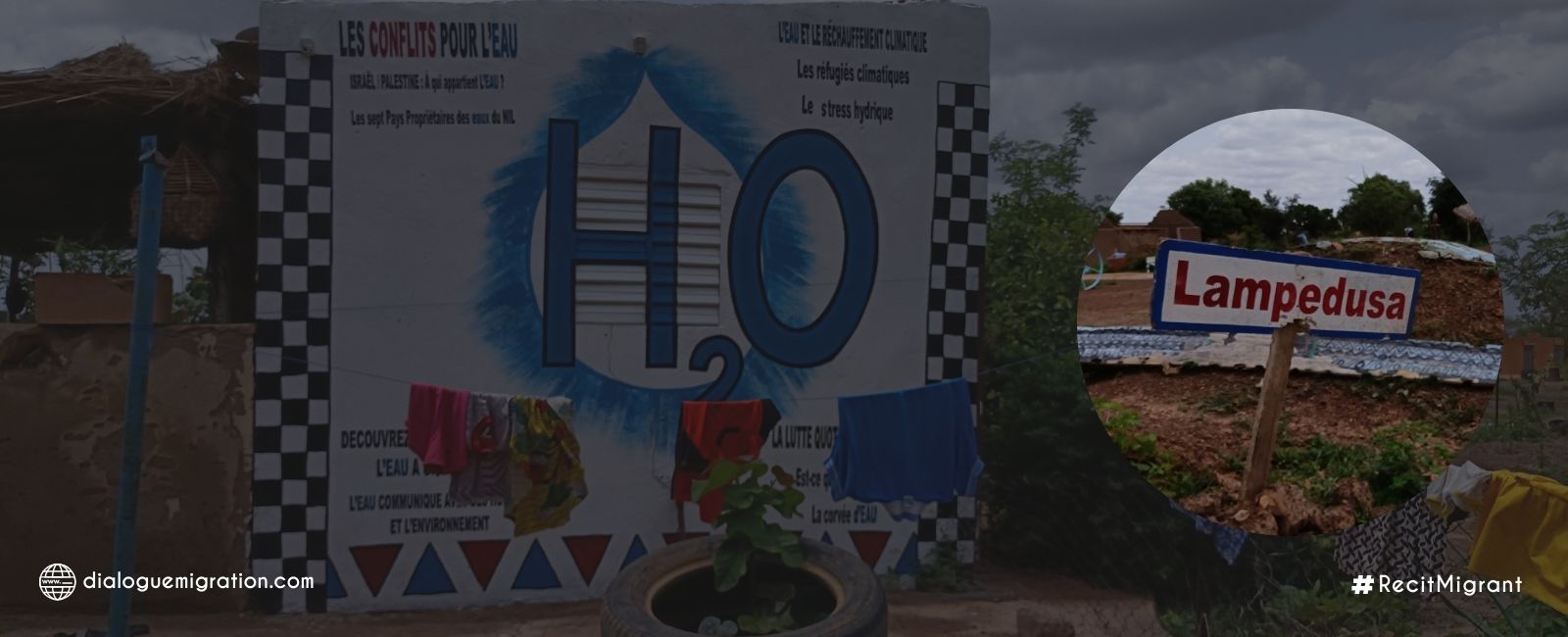

The first water museum in Africa is located in Loumbila, a rural commune, about 25 km from the capital Ouagadougou. Created in 2005, this museum stretches on ten hectares. Its objective is to educate and raise awareness among young people about the values of water, its management, its knowledge and its virtues. If water is a source of life, it is also a source of death, as evidenced by the thousands of young Africans who died at sea while trying to reach Europe. And at the water museum, the founder, Alassane Samoura, made a representation of this drama through the “fake” graves of migrants with a boat that capsized. A performance, certainly, but one that gives chills.
At the water museum, a stone’s throw from Ouagadougou in the commune of Loumbila, there are several objects, of all shapes and sizes, available to visitors. The space is beautiful. Between the songs of the birds and the fresh air given off by multiple plants, it is a real discovery. Discovery of objects from here (Africa) and elsewhere. In a guided tour by Alassane Samoura, Dialogue Migration discovered a very old baric from 1939. It was used to transport water to troops during World War II. Not far away is a pump from 1932, with an empty weight of 200kg and a capacity of 200 liters. It has been imported to Africa since the colonial period.
The museum founder decided to set up this museum whose aim is to make “water a heritage” after a long career in management institutions. “It is after 25 years of experience in the field as a sociologist and anthropologist in the world of NGOs, in hydraulic projects and programmes that I decided to create this museum in order to bring something to humanity,” explained Samoura, who adds that his museum contains 5OO symbols, all of them, related to water.
Africa’s top youth are dying at sea
If all these objects amaze more than one visitor, there are symbols that stick. This is the case with the depictions of the tombs that litter the ground in a corner of the museum. This space, where a sign reading Lampedusa is enthroned, is called “the refusal of migration” or “the refusal of the death of African youth on the sea coast”. In all, there are about ten graves of young Africans of different nationalities who tried the crossing and died. On the various graves you can read the names and origins of the victims. We have Omar from Niger (30 years old), Florence from Ghana (32 years old), Kodjo from Togo (29 years old), Séne from Senegal (19 years old), Da from Burkina Faso (25 years old), Kouamé from Côte d’Ivoire (28 years old). “It’s really the cream of Africa’s youth who are dying at sea. There are also women with their children,” says Alassane Samoura with a sigh and a serious face.
Behind these tombs is a mound of earth, the middle of which is painted blue. Which symbolizes the sea. On the outskirts, pieces of planks are visible. The rest of the canoe capsized. One person survived this tragedy. And it is him who will tell in turn, the story of each one or at least the reasons that led them to take this perilous path.
He says that Omar’s mother sold her jewelry to allow him to leave for a better future in Europe. As for Florence, it was following a divorce that she could not bear and therefore was forced to leave. Kodjo says school doesn’t suit him. “I have to find other ways out in the West,” Kodjo told Omar. Séne, on the other hand, and his parents sold their cattle to the tune of millions to allow him to leave, making him believe that it was possible. Da is the son of a gold miner. His dad sold gold so he could leave because there is more gold there. Kouamé received some money from cocoa and coffee and he thought he could do it. But none of them will make it to their destination.
No to Lampedusa!
For the founder of the museum, this representation aims to shock and raise awareness, wamong young people about the dangers associated with migration but also to make them aware that the West is not an Eldorado. “In the West, they have more problems than we do in Africa,” said sociologist Samoura, for whom the West is not the last boom.
“No to the death of African youth! no to Lampedusa! The anthropologist Samoura writes before pointing the finger at African leaders: “Your policy must not force young people to die. Your democracy needs to be reviewed. Corruption, nepotism… force young people to leave. People don’t leave because they want to. It’s because they don’t have a better tomorrow here.”
For him, some young people risk their lives because they don’t have good information on the migration issue. He therefore invites the youth, in spite of everything, to stay and build the continent because no one will come from elsewhere to do it in their place. “You have all the potential to do it,” he encourages young people.


